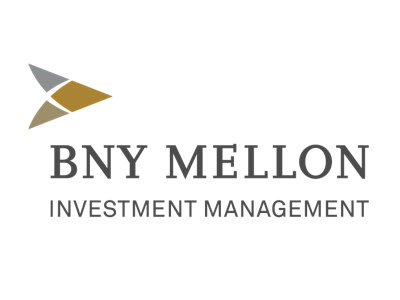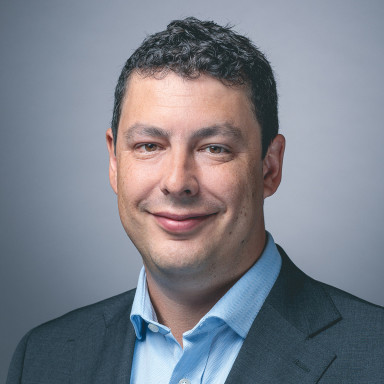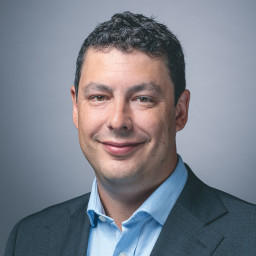Simon Nichols has built a strong track record in multi-asset investing and took over as lead manager of this fund in 2017
The fund focuses on investing in companies with good long-term prospects from across the globe, with some bonds and cash to act as diversifiers
We think this is a good option for investors who want a multi-asset fund with a typically high proportion invested in shares
This fund was recently added to our Wealth Shortlist of funds chosen by our analysts for their long-term performance potential
How it fits in a portfolio
The BNY Mellon Multi-Asset Balanced fund aims to achieve a balance between capital growth and income over the long term, defined as at least 5 years. It uses the IA mixed investment 40-85% sector average as a performance comparator.
The fund invests in larger companies from across the globe with the potential to grow over the long term and are typically based in developed markets. The fund also invests in bonds, usually those issued by developed governments, and cash.
The fund could diversify an investment portfolio focused on growth, or a portfolio focused on company shares. It could also provide some global exposure to a UK focused portfolio.
Manager
Simon Nichols has over 25 years’ experience in the industry and joined Newton Investment Management (Newton) in 2001. Newton are now owned by BNY Mellon. He began managing funds in the mid-2000s and took over management of the BNY Mellon Multi-Asset Global Balanced fund in 2013, before becoming the named lead manager on the BNY Mellon Multi-Asset Balanced fund in 2017.
Nichols manages multi-asset funds for both retail and charity clients, as well as managing a global equity fund. When he finds a company he likes, he tends to invest in it across all of his funds, which reduces the workload associated with managing a number of funds.
Nichols works closely with the mixed-asset and charities team at Newton. Paul Flood, Head of Mixed Assets, and Bhavin Shah are named co-managers for this fund. Flood joined the industry and joined Newton in 2004, while Shah joined the industry in 2004 and Newton in 2011. Both are named managers on a number of multi-asset funds.
While Nichols, Flood and Shah are all named co-managers for this fund, Nichols is the decision maker in terms of what investments end up in the fund, and how much is invested in each idea.
Nichols makes use of the wider analyst teams at BNY Mellon which help to provide ideas around which companies to invest in.
While Nichols manages multi-asset and equity funds, he doesn’t have any people management or significant other responsibilities at BNY Mellon. We therefore think he’s able to focus on managing his funds.
We rate Nichols highly and our conviction in this fund is based on his continued involvement in his role as lead decision maker.
Process
Nichols invests in a combination of shares, bonds and cash. Most of the fund is invested in shares though, with typically 70-80% of the fund invested there.
Nichols favours the shares of established companies with competitive advantages, that often pay a dividend. While there’s no income target for the fund, Nichols likes companies that pay a dividend because of the discipline that this puts on company management teams. This usually leads him to favour large, established businesses, that are cash generative and don’t have lots of debt.
Ideas for the shares part of the fund come from the wider analyst team at BNY Mellon, who effectively act as the first screen of the global universe of companies that Nichols could invest in. The mixed-asset team reviews all recommendations put forward by the analyst team and when they find one of interest to them, they complete their own analysis on the company in addition. If the idea still looks good, it’s debated by the mixed-asset team and if agreed gets added to a shortlist of shares which are the team’s best ideas.
Nichols uses this list to help him decide on what companies to invest in within the fund, however he can invest in ideas that aren’t on this list if he wants to.
The remainder of the fund is made up of bonds and cash. The bonds held in the fund are typically developed market government bonds, but Nichols could invest in corporate bonds if he wanted to. The bonds and cash part of the fund is there to act as a diversifier when markets fall in value.
Asset allocation between company shares, bonds and cash is usually a result of bottom-up idea generation and market valuations. If Nichols has lots of ideas for shares to invest in and thinks they are attractively valued, the amount held in shares is likely to increase. However, if share valuations are high then Nichols is likely to hold a greater amount of cash and invest less in shares.
At the end of May 2024, the fund had around 75% invested in shares, 19% in bonds and 6% in cash. Within the shares part of the fund, around 28% of the fund is invested in US companies, with around 39% in the UK and Europe. In terms of sector exposure, the three largest exposures are Technology, Industrials and Health Care at 15.00%, 13.20% and 13.13% of the fund invested in those sectors respectively. The bond section of the fund is mainly made up of UK government bonds, with some overseas government bonds too.
The underlying universe of potential investments for this fund is large and includes emerging markets, smaller companies, high yield bonds and derivatives. All of these types of investment add risk if used. While Nichols has the option to invest in these areas, his preference to date has been to invest in large companies from developed markets, government bonds and cash.
Culture
BNY Mellon is a large, US-based firm so the managers have a lot of resources at their disposal. Until mid-2019 the team was part of the Newton brand, but even though the name has now changed to that of the parent company, the way Nichols runs the fund remains the same.
In September 2021, Mellon Investments merged its equity and multi-asset teams into Newton. While this has not impacted the way Nichols invests for this fund, it has given the team access to a larger pool of research analysts that help with idea generation.
The managers are incentivised in a way that aligns their interests with those of long-term investors, which we like. However there have been some significant fund manager departures from the wider Newton business in recent years and we continue to monitor this situation closely.
ESG Integration
The team at BNY Mellon believes responsibly managed companies are better placed to achieve a sustainable competitive advantage and provide strong long-term growth. They’ve invested a significant amount of time and resource into their Responsible Investment proposition in recent years, including the hire of Therese Niklasson, the firm’s Global Head of Sustainable Investment, who we have long held in high regard.
All fund managers have access to a Responsible Investment app which centralises a variety of research providers’ data, as well as their own, to help identify material ESG and sustainability issues for a single company. It also includes a quantitative net-zero assessment tool to support their analysis of each company’s net zero transition plans. The firm has also launched a Stewardship app, a database which allows the team to better track progress on their engagement objectives, as well as outcomes from their engagement and voting activities.
In recent years, the firm has launched a sustainable range of funds which take ESG analysis further. They utilise the firm’s thematic research framework to identify and exploit sustainable investment themes. Within the Sustainable range, the Responsible Investment team has power of veto over companies held in the portfolios. This means the final decision is separated from the managers and provides an additional layer of challenge.
Overall we think ESG risks are considered in a meaningful way by the investment team for this fund. However, this fund isn’t part of their Sustainable range and may invest in companies that some would consider to be ‘sin stocks’, including those involved in tobacco, alcohol and gambling.
Cost
This fund is available at an annual ongoing fund charge of 0.67%, but HL clients benefit from an ongoing saving of 0.13%. This means you pay a net ongoing charge of 0.54%. Part of the fund discount is achieved through a loyalty bonus, which could be subject to tax if held outside of an ISA or SIPP.
The HL platform fee of up to 0.45% per year also applies, except in the HL Junior ISA, where no platform fee applies.
The fund takes its charges from capital which can increase the yield, but reduces the potential for capital growth.
Performance
Nichols has performed well as a multi-asset investor over the long term. Since taking over responsibility for this fund at the end of November 2017, it’s returned 61.12%* to the end of May, which compares to the IA mixed investment 40-85% average return of 31.10%. Past performance is not a guide to future returns.
Nichols is a naturally conservative investor, which typically leads his multi-asset funds to not fall as much as peers during market sell offs. Since he’s taken over managing this fund he’s managed to also keep pace during market rallies, although it would be reasonable to expect this fund to lag the wider market during strongly rising markets. Nichols’ multi-asset funds have typically experienced lower volatility than company shares over time and usually lower than multi-asset peers too, although this hasn’t always been the case.
Over the 12 months to the end of May, the fund has returned 10.81% compared to the IA mixed investment 40-85% sector average return of 10.58%. Shares and bonds both added value, with shares in the technology sector being particularly positive for the fund. Investments in Applied Materials and NVIDIA added notably to returns over the period. Both have benefited to differing degrees from the boom in interest in Artificial Intelligence (AI) which has been good for their share prices. Away from technology, investments in Eli Lilly, the American pharmaceutical company and Trane Technologies, an American manufacturing company also added value for the fund.
It wasn’t all good though, with some financials investments losing money for the fund. Prudential and AIA Group both fall into this category and detracted from performance. The funds’ investment in Diageo, the British alcoholic company also lost value for the fund.
At the end of April 2024, the fund had a yield of 2.08%. Please note that yields are not guaranteed and could fall as well as rise over time.
Annual percentage growth
31/05/2019 - 31/05/2020 | 31/05/2020 - 31/05/2021 | 31/05/2021 - 31/05/2022 | 31/05/2022 - 31/05/2023 | 31/05/2023 - 31/05/2024 | |
|---|---|---|---|---|---|
BNY Mellon Multi-Asset Balanced | 4.32% | 17.03% | 6.30% | 4.54%** | 10.81%** |
IA Mixed Investment 40-85% | 1.07% | 17.21% | -0.86% | -1.62% | 10.58% |
**These figures show performance of the T share class, which is available to HL clients. This share class was launched in November 2021 and so only has a two year history for the table above. The remaining figures reflect performance of the W share class, which has a higher ongoing charges figure.


